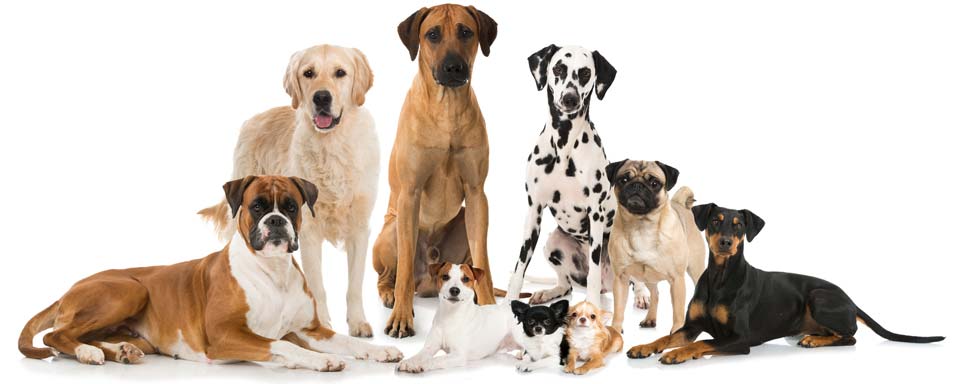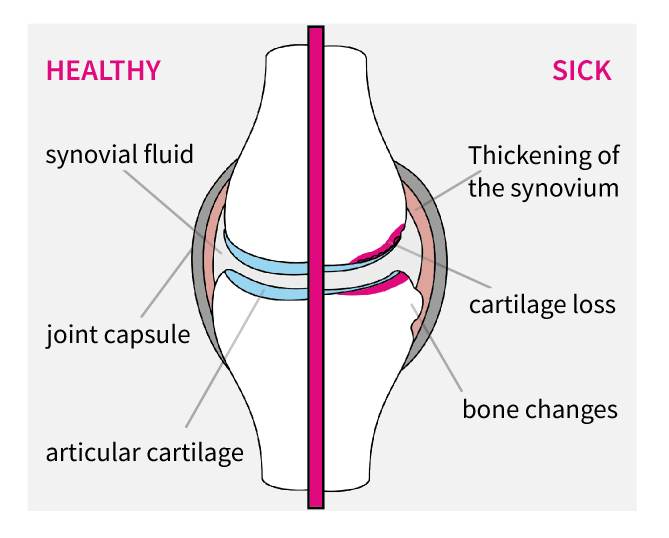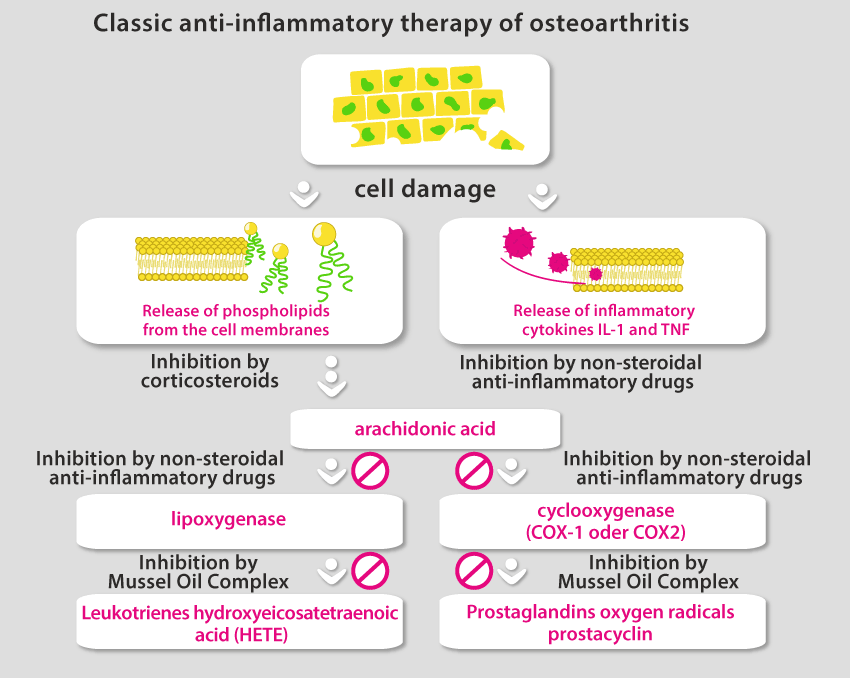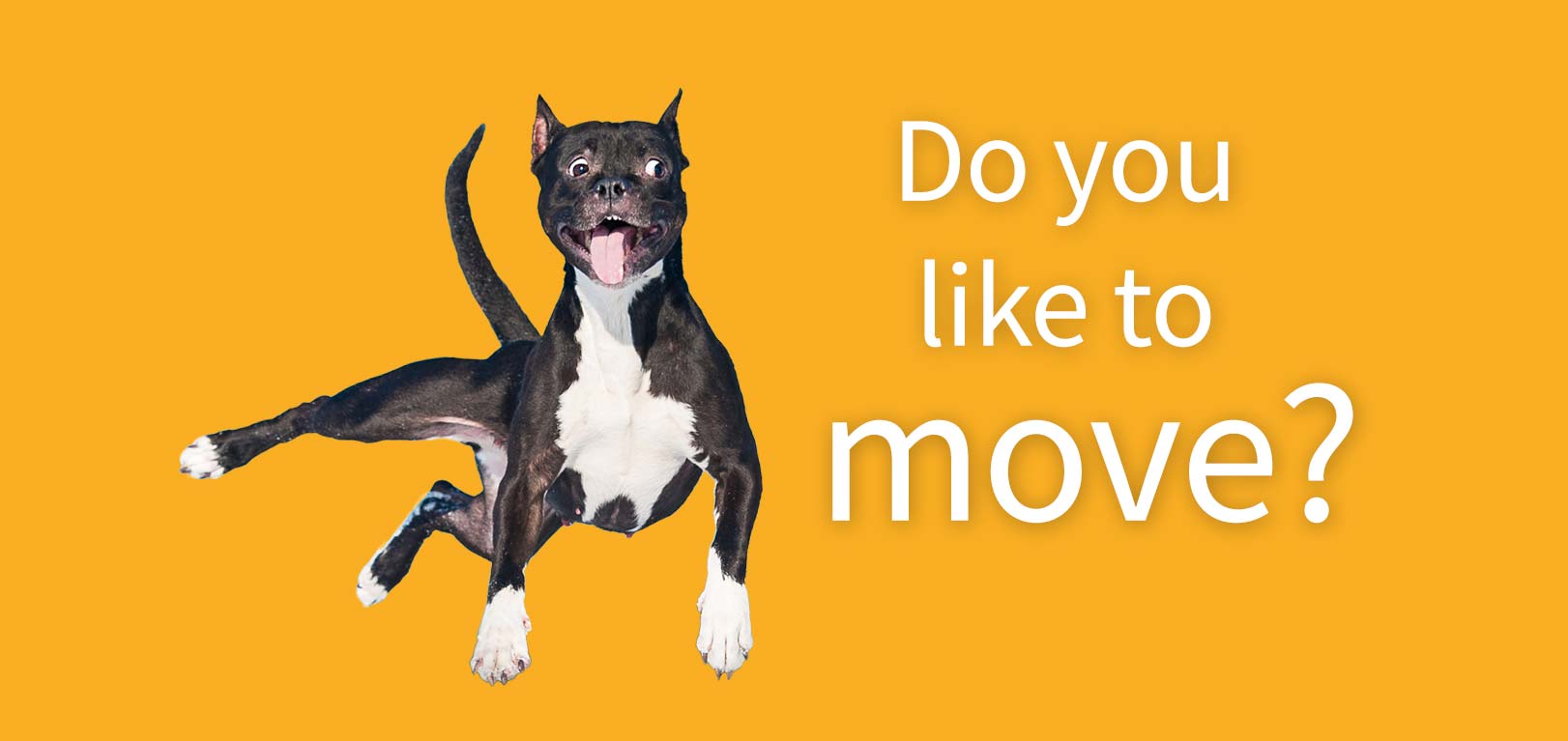
Arthrosis or Arthritis
Arthritis and arthrosis sound similar.
Both of them affect the bones, ligaments, and joints. They also share many of the same symptoms, including joint stiffness and pain.
Arthritis is an umbrella term. It’s used to describe several conditions that cause inflammation in joints. In some cases, the inflammation can also affect your skin, muscles, and organs. Examples include osteoarthritis (OA) and rheumatoid arthritis (RA)
Arthrosis is another name for OA, one type of arthritis. It’s the most common type of arthritis. It is caused by normal wear and tear on y joints and cartilage. Cartilage is the slippery tissue that covers the ends of your bones and helps the joints move. Over time, cartilage can deteriorate and may even disappear completely. This results in bone-to-bone contact in your joints, causing pain, stiffness, and sometimes swelling. Arthrosis can affect any joint in the body. It’s most likely to affect the joints of knees and hips. The risk of developing it increases with age.
Osteoarthritis is progressive and cannot be cured; all the processes involved and their interactions have not been fully researched and understood. However, the balance between the renewal of the cells and disposal of waste products is always compromised, leading to a cycle of new inflammatory processes and further destruction.
You can with a targeted therapy, however, slow down the course of the disease. An important point here is to interrupt the chain of transmitters, which cause the body to break down cartilage.

Symptoms
How do I know that my dog is ill and what kind of dogs are affected?
The signs that your dog suffers from arthritis or arthritis are complex. In principle every dog can get ill at any time. According to studies from the USA, one must assume that every 5th. dog will get this ailment; it is considered to be the most common cause of chronic pain in dogs.
You can divide dogs with a higher probability of disease into 4 basic groups: Age, Current Status, Genetic Predisposition and Existing Diseases.
Age – the proportion of joint fluid (synovia) decreases in the course of life leaving bone structure unprotected.
Current Status – due to excessive body weight, but also during extensive sport or work activities, the joints can be extremely strained and even overloaded (shock absorbing during jumps or running on hard surfaces, frequent work in cold and wet weather without sufficient warming of the joints). The renewal process cannot keep up with this routine.
Genetic Predisposition – congenital joint problems such as elbow joint dysplasia (ED) or hip joint dysplasia (HD), extreme frown (grade-sized or giant breeds), and hereditary defects in cartilage formation.
Existing Diseases – After bone fractures, ligament ruptures, patellar luxation, or during dietary imbalances in the growth phase, arthrosis can arise.
An exact diagnosis can only be made by the Veterinarian. The Veterinarian can perform X-Ray, arthroscopy or arthrocentesis. Ultrasound, CT or MRI can also be used for diagnostic purposes.
Here are a few clues as to whether your dog might be affected:
- Licking or gnawing of individual limbs or joints, especially in resting phases after movement
- Difficulties to get up
- Stiff gait that "engages" after some movement
- Your Dog relieves individual limbs whenever possible. It looks as if your dog is walking crooked or does not like to stand for a long time. He will sit down very fast or even lies down as soon as he has to stand still.
- Your all weather Dog avoids the cold and prefers warm and soft berths.
- Your Dog needs several attempts to jump into the car or on to the sofa
- Your Dog will avoid jumping up and over anything: unlike in the past, where he would jump over tree stumps or on to the sofa, Climbing stairs is difficult: your Dog avoids it where possible.
- Your Dog generally shows less desire to move: avoids playing with his beloved ball.
- Your Dog shows a marked lameness, especially after prolonged or severe exercise.
- A change in the muscular dystrophy occurs because your dog compensates for movement restriction (e.g., increase in Chest circumference when the dog pulls up with his front legs from a resting position rather than using the hind legs).
Treatment
Because arthrosis cannot be healed, the treatment is designed to slow the progress of the disease and minimize clinical symptoms (stiffness, pain). In a predisposition of the dog due to genetic predisposition or other known parameters, the treatment of the veterinarian will be aimed at delaying and minimizing the occurrence of clinical symptoms.
This includes weight management, adapted movement, alternative treatments, e.g. Physiotherapy or acupuncture and the feeding of certain supporting building blocks through the feed.
As the disease progresses, painkillers or surgery are also needed, but this should be delayed as long as possible. With PerNic® Cox, the dog receives a daily concentrated amount of polyunsaturated fatty acids. From this group of so-called omega-3 fatty acids, it is particularly the eicosapentaenoic acid (EPA) and decosahexaenoic acid (DHA), which have been shown to have an inhibitory effect on the enzymes necessary for the formation of leukotien and prostaglandin (COX-1, COX- 2 and LOX-5).
The enrichment of EPA and DHA in the organism aims to replace omega-6 fatty acids (which have an inflammatory effect) in the cell membranes with omega-3 fatty acids, thereby reducing the formation of inflammatory eicosanoids. (Budsberg & Bartels, 2006)
1) Furthermore, EPA and DHA promote the formation of active molecules - resolvins and protectines - which have independent anti-inflammatory (anti-inflammatory) and imunmodulatory properties. They are involved in the dissolution phase of inflammation (Serhan & Chiang, 2008)

